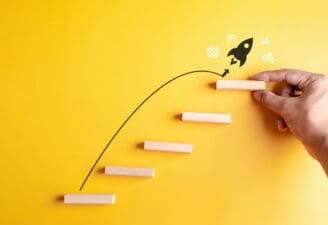Many investors went to bed Wednesday night taking solace in the fact that their equity holdings were hedged via their bond holdings. After all, as every investment textbook likes to point out, when stocks go down, bonds (especially government bonds) tend to go up.
However, this piece of market gospel fell apart Thursday morning, when the TSX recorded its biggest one-day decline in 80 years. Bonds sold off along with equities, and supposedly well balanced portfolios were now being crushed by a twin sell-off, with the pain particularly concentrated on the long end of the yield curve. As of writing, the iShares Canadian Long Bond ETF (TSX:XLB) closed down 6.25% for the day.
So what gives?
There could be two reasons behind the sell-off.
Corporate debt
One, bond indexes tend to hold corporate debt along with government securities. This is why prudent investors really need to look through the holdings of their bond funds to see just how much corporate versus government debt they’re exposed to.
In the case of XLB, the index had over 25% exposure to corporate debt, with a particular 7.7% weighing in energy. Given how stressed financial conditions had become, it naturally followed that spreads on these bonds widened dramatically. Investors demanded higher returns/lower prices to hold these risky assets rather than government bonds, leading to sharp losses in the index.
OK so that takes care of the corporate debt. How about the government bond funds? Well unfortunately, they fared only slightly better. For example, the iShares Canadian Government Bond Index ETF (TSX:XGB) also recorded a 3.5% drop at Thursday’s low, signaling stress in the safe-haven asset class. There are two possibilities behind the price action: margin calls and complete shortage of liquidity.
Margin calls
Given the recent sharp decline in stock prices, overleveraged funds were forced to meet margin requirements as their equity positions were now underwater. To make matters worse, the market sell-off had triggered trading halts in the futures market as well as the cash market. This meant that funds had to sell anything that was not halted to avoid being forced into liquidation.
The only assets that were not frozen then were bonds, cryptocurrencies, and gold – all of which saw selling along with equities. Moreover, bonds had also been on a tremendous rally up leading up to this week, so naturally the best performing assets were sold off first.
Lack of liquidity
The latter reason is a bit more technical. Due to the recent stress on the financial markets, liquidity conditions dried up. This meant that bid-ask spreads on actively trading bonds widened dramatically. Market participants were unable to get adequate fills on their orders or were forced to buy into the wide spreads to meet mandates. This resulted in a disconnect between a fund’s net asset value (NAV) and the fair market value of the underlying holdings, thus showing erratic price movements.
The bottom line
Regardless of the reason, the end result is clear. Correlations between bonds and stocks increased significantly during the worst possible time. This meant that the hedging and protective properties of fixed income instruments, at least for the time being, are fundamentally broken. It’s anyone’s guess as to when market conditions will return to normal, and liquidity to will resume in the fixed income markets, but until that time, do not expect bonds to move like they’re supposed to.







